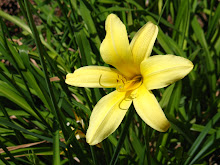One of the things that the Romans built, were, of course, their houses! These were not much to look at. “The earliest Roman dwellings were the most simple habitations that could be imagined after the tent. Built of wood, with a pointed roof, covered with straw, or a sort of primitive shingle, they consisted of one square apartment with an aperture in the top, which admitted a little light and afforded an exit for the smoke, while directly beneath it, in the ground, was a hole for carrying off the rain.” (source) “Domestic architecture long remained very simple, although numerous practical improvements were adopted gradually, until, about 184 B. C., to the atrium were added a kitchen and bedrooms, a…chapel, a court, garden, and garden colonnade. In the court and the colonnades, columns were used, and although comforts and conveniences were thus largely increased, the materials remained simple and the construction plain and unornamented. Slight foundations of stone made the plain brick structures dry.” (source) However, the Romans did accessorize. “The Romans decorated the walls and floors of their houses with small cubes of colored stone. These are called mosaics.” (Millard 92)
The nicer things that the Romans built were usually copied from someone else and made with a twist. For example, the Roman columns derived from the Greeks. The Doric columns were used in forums, (several open squares in the middle of the city,) courtyards, arcades, and civil buildings. The Ionic columns were not really appreciated or properly used in Rome, but it was the opposite with the Corinthian order. “It is stated that as many as fifty varieties of Corinthian capitals were produced for Roman uses” during three centuries. (source, Hindley 70)

Art
“Many characteristics of Roman art have their origins in the art of the Etruscans, the Romans' predecessors as the dominant culture of Italy… Roman art absorbed this Etruscan style and the Etruscan influence included temple architecture, sculpture, portraiture and wall painting. Rome was also deeply influenced by the art of the Hellenistic world, which had spread to southern Italy and Sicily through the Greek colonies there. Plutarch, writing in the 2nd century AD, wrote that before Rome's conquest of Greek Syracuse in Sicily, 'Rome neither had nor even knew of these refined things, nor was there in the city any love of what was charming and elegant; rather, it was full of barbaric weapons and bloody spoils.'
 As Greek treasures continued to arrive in Rome, for example after the sack of Corinth in 146 BC, Hellenistic art continued to exert a fascination on the more austere Romans. Yet Greek culture was not fully accepted until the reign of the Emperor Hadrian and his court (AD 117-38). In the later republic and early imperial period Greek artists were brought to Rome where they designed buildings, repaired sculptures and made new ones…Original Greek statues were copied by Roman artists, though usually in marble rather than bronze, and removed from their original contexts. The portrait bust became a popular form, tending to be more realist than Greek portraiture.” (source)
As Greek treasures continued to arrive in Rome, for example after the sack of Corinth in 146 BC, Hellenistic art continued to exert a fascination on the more austere Romans. Yet Greek culture was not fully accepted until the reign of the Emperor Hadrian and his court (AD 117-38). In the later republic and early imperial period Greek artists were brought to Rome where they designed buildings, repaired sculptures and made new ones…Original Greek statues were copied by Roman artists, though usually in marble rather than bronze, and removed from their original contexts. The portrait bust became a popular form, tending to be more realist than Greek portraiture.” (source) “However, Roman art also had its own original contributions. Compared with Greek architecture, Roman was more secular and utilitarian and showed an interest in grandeur and scale, for example in the Colosseum and public baths in Rome. The Romans also developed the use of the arch, the vault and the dome, and discovered concrete, which all allowed for a much grander architecture, its culmination being found in religious buildings such as the Pantheon in Rome and the Hagia Sophia in Constantinople.” (source)
“However, Roman art also had its own original contributions. Compared with Greek architecture, Roman was more secular and utilitarian and showed an interest in grandeur and scale, for example in the Colosseum and public baths in Rome. The Romans also developed the use of the arch, the vault and the dome, and discovered concrete, which all allowed for a much grander architecture, its culmination being found in religious buildings such as the Pantheon in Rome and the Hagia Sophia in Constantinople.” (source)The Romans contributed largely to architectural and artistic development. They built houses, theatres, temples, columns, public baths, and more. They painted, made mosaics, and shaped sculptures. The Romans are very interesting to learn about because they built their own things and they copied other cultures' ideas to make them Roman-style.


Works Cited
Hindley, Judy and Anne Civardi, James Graham-Campbell, Heather Amery, Patricia Vanags, and Tony Allen. Time Traveler. London, England: Usborne Publishing Ltd. 1976.
Millard, Dr. Anne and Patricia Vanags. The Usborne Book of World History. London, England: Usborne Publishing Ltd. 1985.


2 comments:
5,5,5
I'm doing a project on Etruscan art and need some good quality images. Is this mosaic Etruscan? If so, please e-mail me at jonesj92@gmail.com and let me know where I can find it. Thanks!
Post a Comment